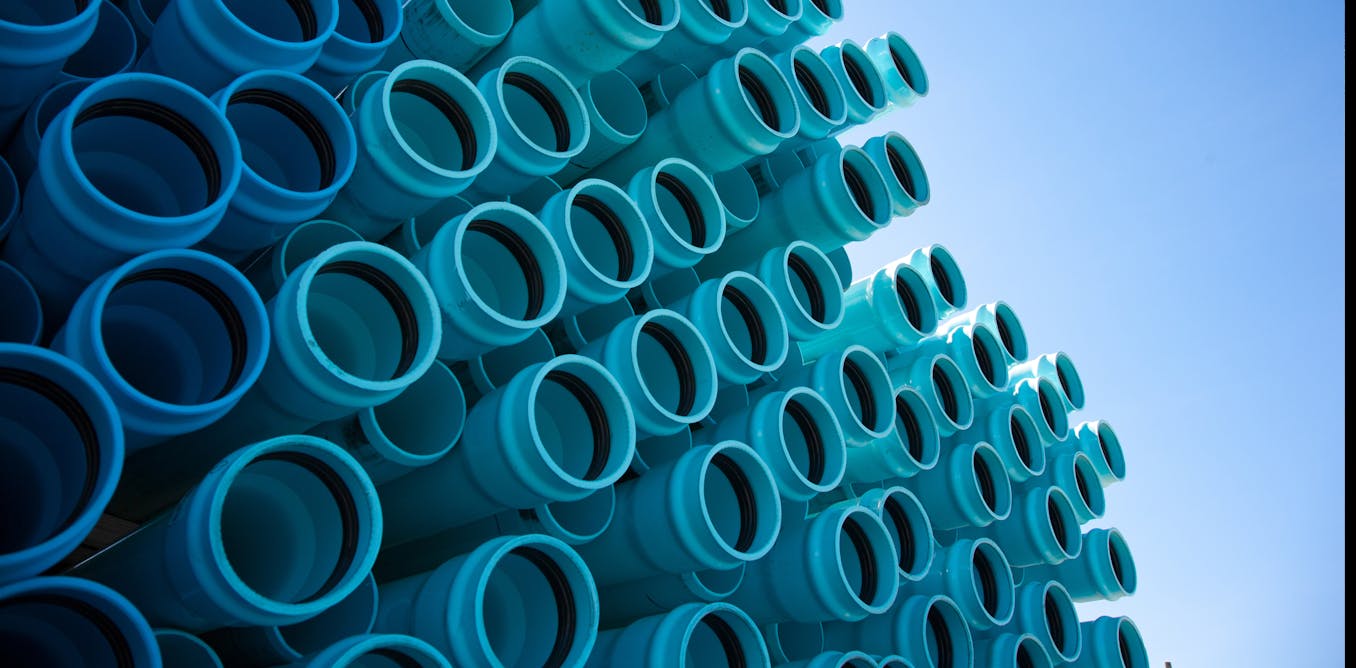Hidden health costs of plastic
One type of plastic, PVC, was first used in U.S. water systems in 1955 and became widespread in the 1970s. Other types of plastic pipes include cross-linked polyethylene (PEX), high-density polyethylene (HDPE) and chlorinated polyvinyl chloride (CPVC).
Scientific studies have shown that plastic pipes can attract metals and leach out chemicals and micro- and nanoplastics, which are known to exacerbate kidney disease.
Over the past decade, researchers have documented the degradation of plastics and the release of chemicals from plastic polymers and additives in plastics and microplastics. A 2023 study found that pipe material and age can contribute to the release of microplastics in drinking water.
Biofilm – the layer of microorganisms that build up on surfaces in contact with water – can also cause problems in pipes. A 2023 study showed how this biofilm can collect heavy metals, such as lead, which can then be slowly released into the water over time.


